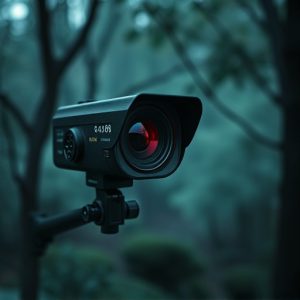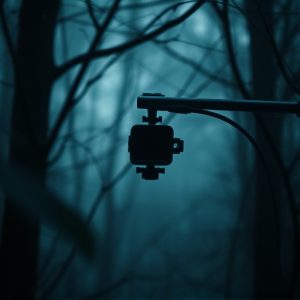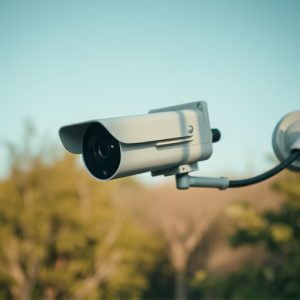Undetectable Wireless Cameras: Placement, Detection, and Countermeasures
Undetectable wireless security cameras offer discrete surveillance solutions by seamlessly integrati…….
Undetectable wireless security cameras offer discrete surveillance solutions by seamlessly integrating into everyday objects, providing high-quality audio and visual data without raising suspicion. With night vision, long-lasting batteries, and wireless transmission, they enable real-time access to private spaces in homes, offices, and public areas, catering to paramount privacy and security needs. These advanced devices can be strategically placed behind furniture or in false ceiling tiles for effective covert recording, using everyday objects like light switches and plants for integration. Advanced detection technologies are needed to combat these imperceptible devices as technology advances, with proactive countermeasures including signal-jamming and electromagnetic detectors.
Undetectable wireless security cameras have revolutionized surveillance, offering discreet monitoring solutions. This comprehensive guide explores the intricacies of covert recording equipment placement and detection. From understanding advanced technologies that enable invisible observation to mastering strategic positioning for maximum effectiveness, this article covers it all. Learn about the latest undetectable wireless security cameras and effective countermeasures to stay ahead in ensuring comprehensive protection without compromising privacy.
- Understanding Covert Recording Equipment: A Comprehensive Overview
- Types of Undetectable Wireless Security Cameras and Their Functionality
- Placement Strategies for Maximizing Stealth and Effectiveness
- Detection Methods and Countermeasures: Staying Ahead in the Game
Understanding Covert Recording Equipment: A Comprehensive Overview
Covert recording equipment, often referred to as hidden cameras or bugs, are sophisticated devices designed to capture audio and visual data discreetly. These undetectable wireless security cameras can be easily integrated into everyday objects like pens, clocks, or even flowers, making them nearly invisible to the naked eye. They transmit recorded information wirelessly to a monitoring device or storage unit, ensuring real-time access to private spaces without raising suspicion.
Understanding how these devices work is crucial for both their effective deployment and detection. Modern covert recording equipment leverages advanced technology such as low-light sensors, night vision capabilities, and high-resolution video quality. They are powered by compact batteries or even harvested energy from surrounding sources, ensuring long-lasting operation without requiring external power cords. This discrete functionality makes them a popular choice for surveillance in various settings, including homes, offices, and public spaces, where maintaining privacy and security is paramount.
Types of Undetectable Wireless Security Cameras and Their Functionality
Undetectable wireless security cameras have evolved into sophisticated technology, offering advanced features and near-invisible installation options. These cameras are designed to blend seamlessly into their surroundings, making them ideal for discreet surveillance. Their wireless functionality eliminates the need for complex wiring, allowing for easy placement in hard-to-reach or aesthetically sensitive areas.
One of the key benefits is their ability to transmit high-quality video feeds wirelessly over a stable network connection. This enables remote monitoring and real-time alerts via smartphone apps or computer software. Advanced models may include motion detection, night vision capabilities, and even AI-powered object recognition, ensuring comprehensive coverage without drawing attention.
Placement Strategies for Maximizing Stealth and Effectiveness
When placing covert recording equipment, the primary goal is to remain undetected while capturing clear and compelling footage. This requires strategic thinking and a deep understanding of the environment. One effective strategy is to utilize hidden spots that are out of plain sight but still offer optimal coverage. For instance, placing undetectable wireless security cameras behind furniture or in false ceiling tiles can provide discreet surveillance without raising suspicion.
Another key placement strategy involves leveraging everyday objects as cover. Cameras can be integrated into seemingly innocuous items like light switches, fire alarms, or even plants to blend seamlessly into the surroundings. This not only enhances stealth but also increases the effectiveness of the recording equipment by capturing unguarded moments without alerting subjects. By combining these tactics, professionals can create a robust surveillance system that is both unobtrusive and highly productive.
Detection Methods and Countermeasures: Staying Ahead in the Game
Detection methods have evolved significantly with advancements in technology, making it more challenging to place and use covert recording equipment undetected. Traditional methods like visual inspections and metal detectors have limited success against modern devices designed to be imperceptible. Undetectable wireless security cameras, for instance, utilize advanced technology to transmit footage wirelessly without leaving any physical trace of their presence.
To stay ahead in this game, countermeasures must be proactive and innovative. This includes employing signal-jamming techniques to disrupt the communication channels of these devices or using specialized detectors capable of picking up electromagnetic emissions that may indicate hidden cameras. Additionally, regular updates on detection technologies and staying informed about new trends in covert recording equipment can help individuals and organizations maintain a robust security posture, ensuring that their privacy remains intact in an increasingly digital world.
Undetectable wireless security cameras have evolved into advanced surveillance tools, offering both stealth and clarity. By understanding their functionality, implementing strategic placement techniques, and staying informed about detection methods, users can leverage these devices effectively for enhanced security without compromising privacy. This comprehensive guide equips readers with the knowledge to navigate the intricate world of covert recording equipment, ensuring a secure environment while maintaining awareness of potential countermeasures.


